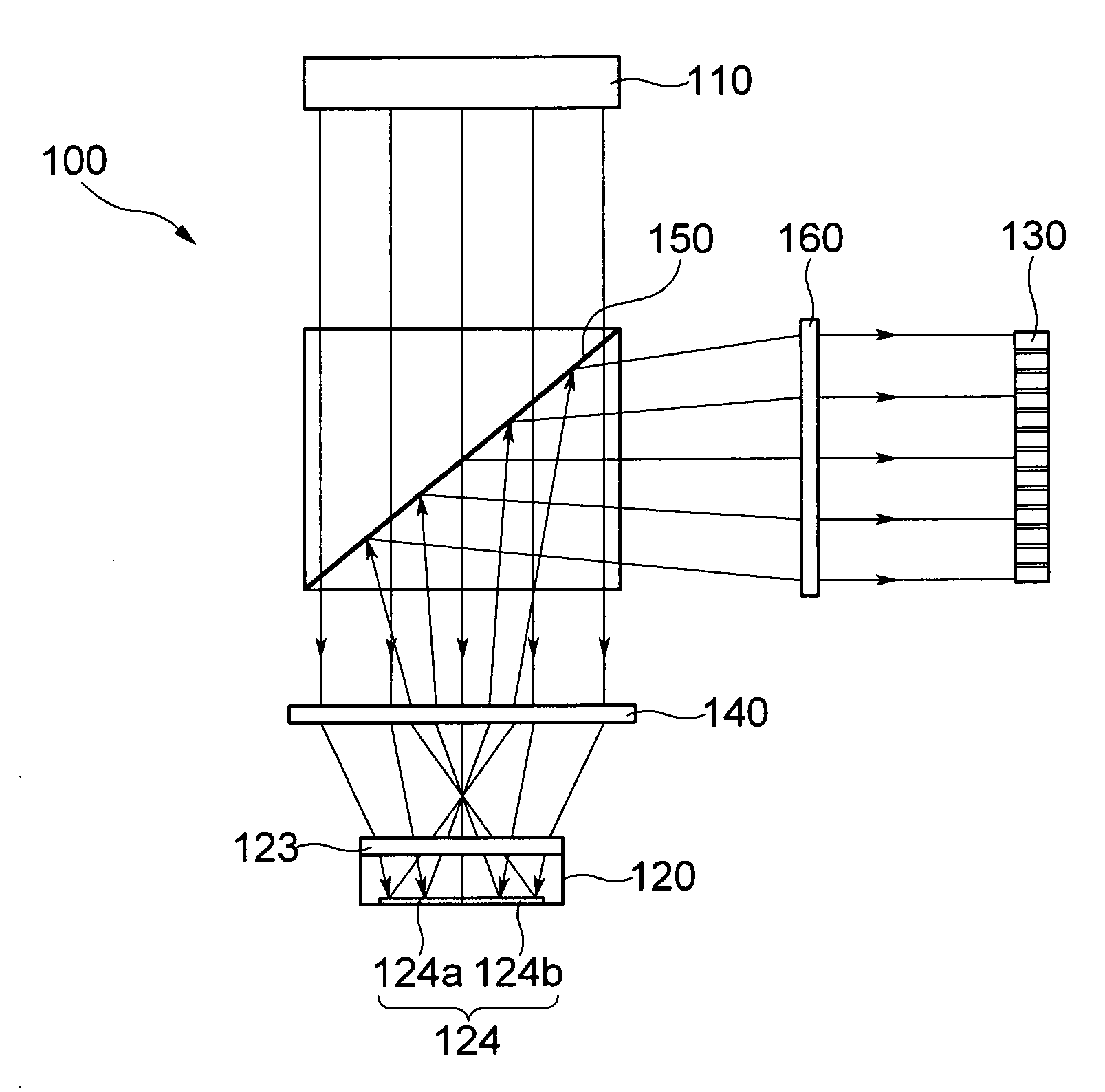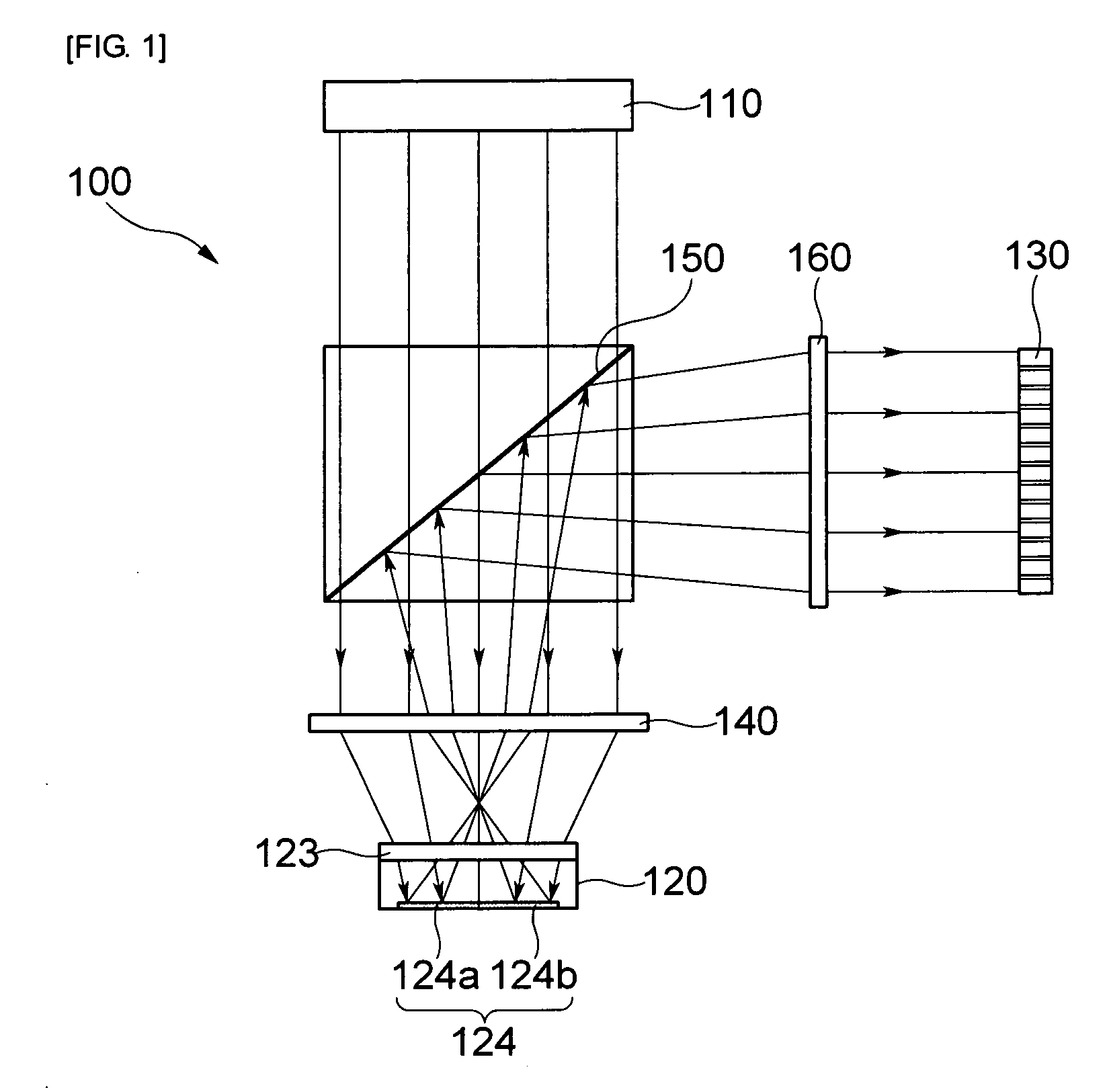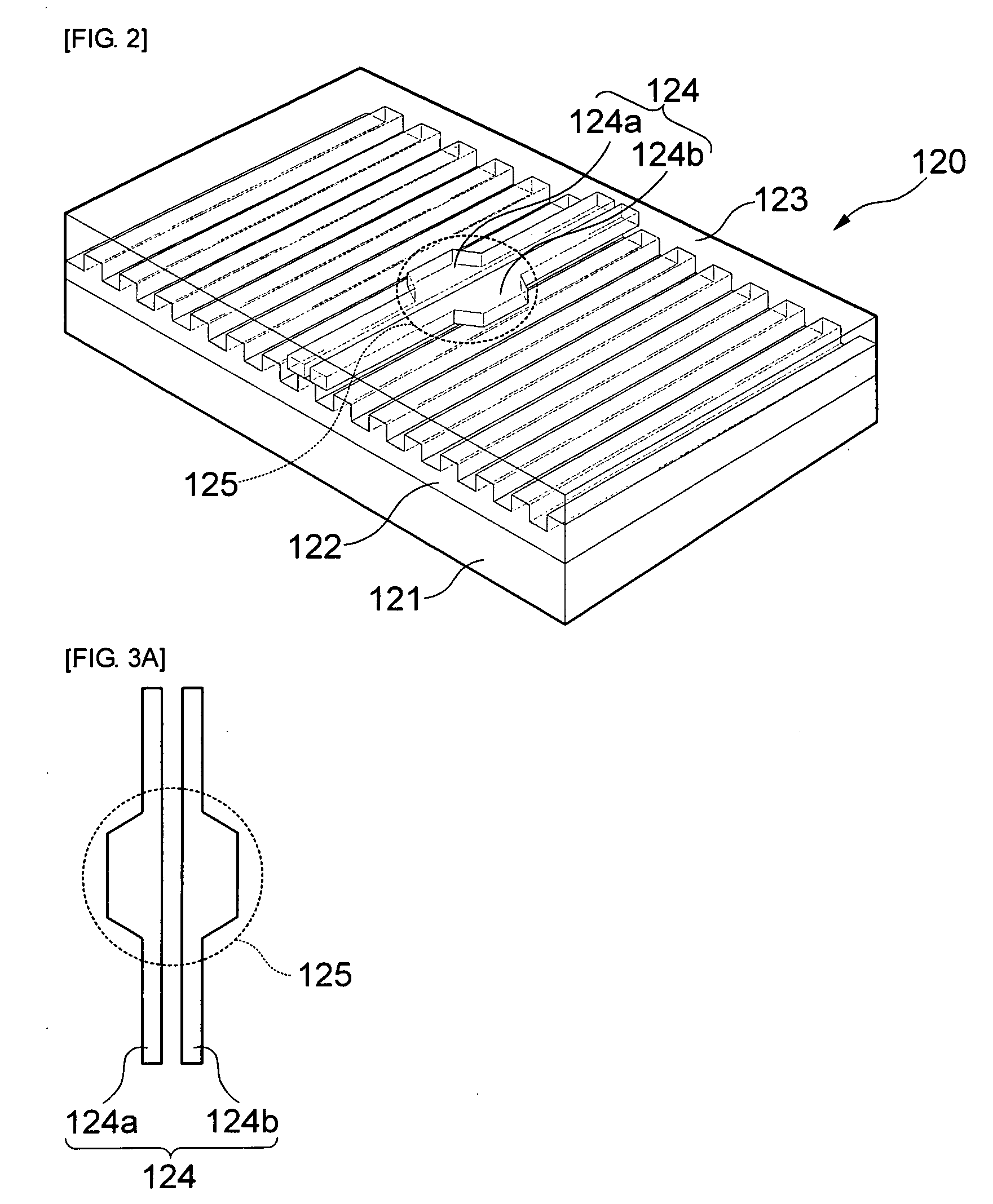Multi-channel biosensor using surface Plasmon resonance
a biosensor and surface plasmon technology, applied in the field of multi-channel biosensors, can solve the problems of complex system structure, high cost of device construction, and low stability and reliability of the system
- Summary
- Abstract
- Description
- Claims
- Application Information
AI Technical Summary
Benefits of technology
Problems solved by technology
Method used
Image
Examples
Embodiment Construction
[0029]Hereinafter, a matter regarding to an operation effect including a technical configuration corresponding to the object of the biosensor using the surface plasmon resonance in accordance with the present invention will be appreciated clearly through the following detailed description with reference to the accompanying drawings illustrating preferable embodiments of the present invention.
[0030]First of all, FIG. 1 is a diagram showing the construction of a biosensor using a surface plasmon resonance in accordance with the present invention, and FIG. 2 is a perspective view of a sensor chip employed in the biosensor in accordance with the present invention.
[0031]As shown, the biosensor 100 in accordance with the present invention includes a light source 110, a sensor chip 120 on which a beam emitted from the light source 110 is reflected, and a sensing unit 130 for measuring a light intensity to the beam reflected on the sensor chip 120.
[0032]The beam emitted from the light sourc...
PUM
 Login to View More
Login to View More Abstract
Description
Claims
Application Information
 Login to View More
Login to View More - R&D
- Intellectual Property
- Life Sciences
- Materials
- Tech Scout
- Unparalleled Data Quality
- Higher Quality Content
- 60% Fewer Hallucinations
Browse by: Latest US Patents, China's latest patents, Technical Efficacy Thesaurus, Application Domain, Technology Topic, Popular Technical Reports.
© 2025 PatSnap. All rights reserved.Legal|Privacy policy|Modern Slavery Act Transparency Statement|Sitemap|About US| Contact US: help@patsnap.com



